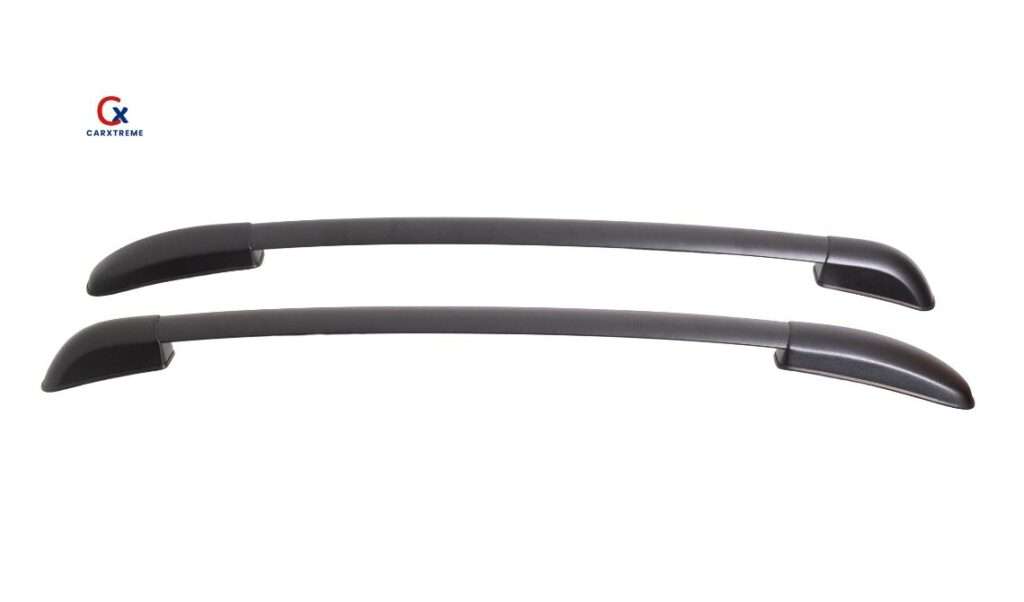The Complete Guide To The Use of Car Roof Rails
When we think about the features that make a car stand out, car roof rails might be the least that comes to mind. Car roof rails are more than just aesthetic elements. They are the unsung heroes of cars that open up a lot of possibilities for adventure seekers and practical-minded drivers. In this article, we will dig into the Use of Car Roof Rails, covering the different ways in which they can affect your driving experience.
What are Car Roof Rails?
Car roof Rails are the horizontal poles that are attached to the roof of a vehicle. They run side by side with the car’s length and are made to act as shields and to carry various types of loads.
Roof rail has two primary parts, which are; the base and the crossbar. The base is usually firmly attached to the roof of the car, and the crossbar attached to the base provides a space for securing items.
The main purpose of the roof rails is to increase car load-carrying capacity. They allow the driver to transport items that might not fit inside the car, such as big luggages, bicycle, kayak, ski and other large gear.
Car Roof Rails Benefits
Car roof rails have a lot of benefits that increase the usefulness of your car. Here are some Car Roof Rails Benefits
- Increases cargo capacity: Roof rails provide extra storage space for transporting large items that cannot fit in the car.
- Versatility: They are highly useful, allowing to carry a wide range of items. This versatility makes them important when going for various outdoor activities.
- Improve interior space: Using a roof rail frees up space inside the vehicle, making it comfortable for passengers.
- Enhances aesthetics: Roof rails add a smooth and classy look to your vehicle, enhancing its visual appeal.
- Extra security: It has security qualities that help protect your load from theft during stops.
Car Roof Rack Installation

Installing car roof rails is relatively similar to car roof rack installation, mainly because they perform complementary duties. To install car roof rails it is necessary to follow these steps;
- Gather material: Make sure to have all the necessary tools for the installation. Read the instructions given in the car roof rail manual to understand the perfect steps for your car model.
- Identify mounting point: Mark the point on the car roof where the roof rail will be placed. These points are usually shown in the car roof rail installation instructions.
- Prepare the roof: Use a mild detergent or rubbing alcohol to wipe the roof to remove dirt or debris that could affect installation. Be sure the roof is dry before you continue.
- Position the rail: Place the rails in perfect positions on the roof. Mark the positions by using masking tape and make sure the rails are centered and well spaced.
- Attach the rails to the mounting point: Attach the base of the roof rail to the fixing point on the roof using the provided equipment and then tighten them.
- Check alignment: Double check the alignment to ensure that the roof rails are parallel and precisely spaced on the roof.
- Check stability: Gently try to shake the roof rails to be sure they are firmly attached to your vehicle’s roof. They should not move or sway.
Price of Roof Rails
In India, you can generally find the price of roof rails ranging from ₹2000 to ₹10,000 or more for a pair, installation cost excluded. Prices vary depending on several factors like;
- Brand
- Material design
- Compatibility with specific car models
- Design and features
- Load capacity
- Installation complexity
- Resistant to rust

Types of Car Roof Rails
Raised Roof Rail
They are raised off the roof and provide a mounting point for crossbars. It runs from the front to the back of a car. These are mostly found on SUVs, crossovers, and some station wagons.
Flush Roof Rail
These are designed to fit smoothly with the car’s roofline, offering a smooth and put-together appearance. They are not as flexible for attaching accessories as raised roof rails, but they offer a more smooth advantage.
Integrated Roof Rail
Integrated roof rails are part of the car’s design and cannot be adjusted or removed. They are often found on cars like off-road SUVs and some wagons. While they may reduce the attachment of accessories, they are strong and built for rough use.
Factory-Installed Roof Rail
These types of roof rails are mostly customized to provide a secure and smooth attachment point for accessories. A lot of vehicles come with factory-installed roof rails, which are particularly fit for that car model.
After-Market Roof Rail
If your vehicle doesn’t come with pre-installed roof rails, you can buy after-sales roof rails. They are available in various styles and are adjustable to fit a large number of car models.
Removable Roof Rail
Some roof rails are made to be easily removed when not in use. This can be beneficial if you want to maintain a sleek roofline when the rails are not needed.

Conclusion For Use of Car Roof Rails
Car roof rail use are the key to unlocking the full capability of your vehicle. Whether you’re going on a cross-country road trip, pursuing outdoor entertainment, or running a business, roof rail increases your car’s usability, improves style, and makes your journey more convenient.
FAQs: About Use of Car Roof Rails
What is the point of roof rails on cars?
Roof rails increase load capacity and utility by providing a secure space for transporting items.
How strong are roof rails?
Roof rails are made to be strong and can carry loads ranging from 45kg to100kg depending on the vehicle.
Are roof rails important?
Yes, roof rails are important as they increase a car’s carrying capacity.


 Carxtreme offers top-notch car accessories and help to to enhance your car look
Carxtreme offers top-notch car accessories and help to to enhance your car look